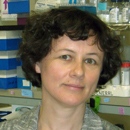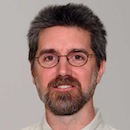Academic Editors
The following people constitute the Editorial Board of Academic Editors for PeerJ. These active academics are the Editors who seek peer reviewers, evaluate their responses, and make editorial decisions on each submission to the journal. Learn more about becoming an Editor.

Pasquale Avino
Prof. Pasquale Avino received his Master Degree in Chemistry in 1992 and his Ph.D. in Chemical Sciences at the University of Rome “La Sapienza” in 1997.
He was appointed as Post-Doc (1997-1998) at the Department of Chemistry of the University of California, Irvine (UCI) in the Rowland (Nobel Prize in chemistry in 1995) and Blake group. From 1999 until January 2018, he was appointed as Researcher at the ISPESL/INAIL Research Center, and from February 2018 to January 2021, was appointed as Three-years Term Researcher contract (RTDB).
In February 2021, Prof. Avino was appointed Associate Professor in Analytical Chemistry and Environmental Chemistry within the Department of Agricultural, Environmental and Food Sciences, at the University of Molise, Campobasso.
His current research follows studies devoted to the development of innovative analytical methodologies for development and application of analytical and sampling methods for the qualitative and quantitative determination of chemical compounds (e.g., contaminants, pollutants, nutrients) in food, agricultural, biological and anthropogenic matrices.
In 1988, he was the recipient of the “Group Achievement NASA Award”, and the “Next Generation Award” during the 22nd International Symposium on Chromatography. In 2003 he was the recipient of the “Environmental Sapio” Award for his research in the environmental field. In 2022 he received the Medal for Ecology from the Moldavian Chemical Society.

Haikun Zhao
I am a full Professor in the College of Atmospheric Science at Nanjing University of Information Science & Technology (NUIST), China. I received my Ph.D. in Atmospheric Science from NUIST in 2012. I have been working on tropical cyclones and climate change, seasonal and intra-seasonal tropical cyclone forecasts since 2007. I have published over 50 articles in peer-reviewed journals such as the Nature Communications, Journal of Climate, and Geophysical Research Letters.

Tom Webb
Royal Society University Research Fellow in the Department of Animal & Plant Sciences, University of Sheffield, UK. Marine macroecologist, interested in applying computational methods to mobilise data and to visualise and analyse the distribution and dynamics of marine biodiversity at large spatial scales.

Alexandra Lusser
Associate Professor at the Medical University of Innsbruck, Austria. Our work includes the study of chromatin modulating factors in Drosophila and mouse and the analysis of posttranscriptional modifications on RNA.

Elisabetta Ada Cavalcanti-Adam
E. Ada Cavalcanti-Adam is a research group leader at the Institute of Physical Chemistry, University of Heidelberg and head of Central Scientific Facility “Biomaterials and Molecular Biology” at the Max Planck Institute for Intelligent Systems in Stuttgart. Her main research interest is on extracellular stimuli which guide cell structure and functions with a special focus on the role of growth factors on cell adhesion and migration.

Irina U Agoulnik
Associate Professor at FIU College of Medicine. Director of Histopathology Core. Academic Editor of PLoS ONE.

Albert Cheng
Albert Cheng obtained his BSc in Biochemistry and MPhil in Biology from Hong Kong University of Science and Technology in 2005 and 2007, respectively. He studied neurotrophin signaling and C. elegans developmental genetics. He then pursued his PhD in Computational & Systems Biology at MIT in the labs of Profs Christopher Burge and Rudolf Jaenisch and worked on various topics on epigenetics, gene regulation and alternative splicing in stem cells, reprogramming, cancer metastasis, erythropoiesis and differentiation. Cheng and colleagues identified H3K27ac as a signature for active enhancers. He analyzed alternative splicing in epithetlial-mesenchymal transition, cancer metastasis as well as erythropoiesis and identified splicing factors regulating these processes. He constructed CRISPR-on, an artificial RNA-guided activator based on CRISPR/Cas. After graduating in 2014, he joined the Jackson Laboratory at Bar Harbor, ME, as one of the first JAX scholars where he continued to work on understanding and improving the CRISPR/Cas technology. In July 2015, he started his own lab as an assistant professor at the Jackson Laboratory for Genomic Medicine campus at Farmington, CT.

Tim P Levine
Tim Levine trained first as a medic then moved into membrane cell biology, and then into intracellular lipid traffic. He showed that inter-organellar contacts are important sites for non-vesicular traffic inside cells. This was part of a revolution in our understanding of intracellular organelles. For over 40 years previously membrane contact sites had been largely ignored or dismissed as artefacts. Tim initially found a lipid transfer protein that localised to a contact site, and showed that it bound to the endoplasmic reticulum (ER) protein VAP via a motif he named the FFAT motif. FFAT motifs are present in several other lipid transfer proteins leading Tim to propose that FFAT-motif proteins would act at contact sites by binding simultaneously to both the ER and another membrane. By improving the definition of FFAT-like motifs, Tim showed they are present in numerous other proteins, facilitating molecular research of many contact site components. Tim organised the first two conferences on contact sites in 2005 and 2011, linking advances in lipid traffic to those in calcium traffic to bring together these overlapping sub-disciplines.
Tim has also used remote homology tools to identify a new family of lipid transfer proteins anchored at contact sites, and highlighted the power of these tools through specific examples and a ‘How-To’ guide.

Kevin M. Crofton
Research Toxicologist and Acting Deputy Director of the National Center for Computational Toxicology at the US Environmental Protection Agency. Adjunct Assistant Professor in the Department of Toxicology at North Carolina State University and the Curriculum in Toxicology, University of North Carolina at Chapel Hill.

Bill P Leggat
I was awarded my PhD from James Cook University in 2001 where my research project focussed on photosynthesis and bleaching in the symbiotic giant clam Tridacna gigas. I then moved to the University of Queensland where I was a Postdoctoral Research Fellow in the Centre for Marine Studies in the laboratory of Prof Ove Hoegh-Guldberg. In 2007 I returned to James Cook Univeristy as a Lecturer in the discpline of Biochemistry, I am now a Associate Professor and head of the Symbiosis Genomics Research Group and a Chief Investigator in the ARC Centre of Excellence for Coral Reef Studies. The overarching aim of my research is to link transcriptomic and metabolomic changes to whole organism responses and acclimation. My research utilises genomic and metabolomic techniques to determine how the coral holobiont responds to anthropogenic changes, including increasing temperatures, ocean acidification and eutrophication.

Daniel J Moore
Dr. Moore completed his undergraduate training at Harvard University where he also studied at the MGH Transplantation Biology Research Center (TBRC). He continued his focus in transplantation immunology and autoimmune disease during studies in the MSTP program at the University of Pennsylvania. He subsequently completed his training in pediatrics and pediatric endocrinology at Vanderbilt University Medical Center. His laboratory focus is on the restoration of immune regulation in individuals with autoimmune disease. He pursues this effort through studies on the cellular and molecular biology of effector and regulatory lymphocytes and their responses to tolerance-inducing immune therapies.

Felipe G Naveca
I am a microbiologist with experience in classical and molecular techniques applied to the study of human pathogens, mainly threatening RNA and DNA viruses. My research focuses on developing diagnostic tools, molecular epidemiology, and evolution, mostly on emergent and reemergent viruses. My team approaches include genomics and phylogenetic studies to characterize known and unknown viruses; field studies on arboviral emergence in a rural area in the Brazilian Amazon; immunogenetics studies related to susceptibility or resistance against microbial infections; studies on biomarkers of acute viral illness; in vitro & in vivo virus-host interactions and evolution; and SARS-CoV-2 and other respiratory viruses molecular epidemiology. Senior investigator of Fiocruz Amazonas and Deputy Director of Research and Innovation. Member of the Brazilian Society for virology since 1997. Member of the Brazilian network of specialists in Zika and correlated diseases.

